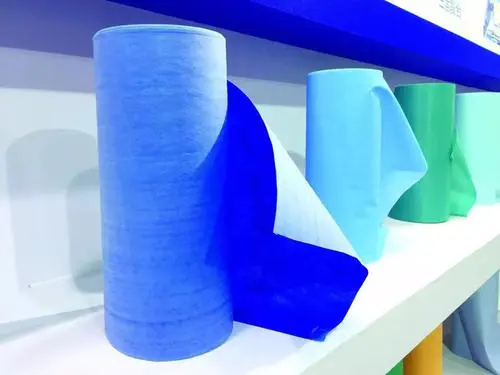Development of nonwovens capacity and demand in Southeast Asia
Apr 27, 2021 | by Zhao Xinhua

If measured by the annual GDP growth rate, the economies of the five major Southeast Asian countries (Thailand, Malaysia, Vietnam, the Philippines, and Indonesia) contracted in 2020. COVID-19 has had a devastating impact on key industries in these five countries, especially those countries that rely heavily on tourism. COVID-19 has also caused border closures, business shutdowns and a sharp rise in unemployment. The government’s response is to substantially increase economic stimulus and unemployment spending.
The impact of COVID-19 on the nonwovens industry in these five countries was far less than the impact on their economies. The surge in domestic and export demand for protective products (protective clothing, masks) has boosted the production of nonwovens. As in other countries, consumer demand for disinfecting wipes and other wipes is on the rise, as is demand for sanitary products such as diapers.
Driven by favorable demographics, economic conditions, increasing market penetration and strong local and export demand, Southeast Asian countries remain a promising region for the nonwovens industry. Despite the uncertainty created by the COVID-19, the impact of the recent economic slowdown in the region, as well as the relatively small impact on manufacturing investment and consumer spending, will be quickly addressed through the stimulus package.
In Southeast Asia and China (where market penetration remains low), the gradual increase in market penetration for disposable and durable nonwovens has been a positive factor in the good growth in demand for nonwovens and exports in these major Asian markets. Over time, nonwovens producers in the five Southeast Asian countries are expected to benefit from strong demand from China, Japan and other countries in the Asia-Pacific region and beyond. The largest end market for nonwovens will be sanitary products, followed by durable geotextiles and other markets.
Several global and regional manufacturers of disposable hygiene products already have a presence in Southeast Asia, including Kimberly-Clark, Johnson&Johnson, Kao, Procter&Gamble and Unicharm. Increased capacity for hygiene products in Southeast Asia is a sign of growing demand in the region and also evidence that the region is increasingly becoming a manufacturing base for exports to other parts of Asia.
In 2020, Southeast Asia’s nonwovens production capacity mainly includes spunbond/spunmelt, staple fiber needling and/or thermal bonding, and polypropylene spunbond needle punching. There are also small-scale through-air thermal bonding production lines in development.
During the period 2015-2020, the production capacity of fine deniers spunbonded and spunfused polypropylene nonwovens in the five countries/regions of Southeast Asia increased by an average of 6.6 percent per annum, from 185,000 tonnes in 2015 to 255,000 tonnes in 2020. The 70,000 tonnes added during the period included CNC/Fitesa has 15,000 tons in Thailand, Asahi (Thailand) and Toray (Indonesia) each have 20,000 tons, and Fibertex (Malaysia) has 15,000 tons.
CNC/Fitesa opened a new Reifenhauser 5 production line at the end of 2020, with an annual capacity of 33,000 tons. Asahi will install a new production line with a capacity of 15,000 tons in Thailand in the second half of 2021. During the same period, Fibertex will install the Reifenhauser 5 production line in Malaysia, with an annual capacity of 15,000 tonnes. Both production lines will be put into operation in 2022. Through these investments, the annual production capacity will be increased by 63,000 tons (24.7 percent). The new capacity could lead to a glut in the region.
In 2020, the annual production capacity of fine-denier and mid-denier spunbond/spunmelt polypropylene in Southeast Asia will be 264,000 tons, accounting for about 7 percent of the total global production capacity of this technology category. The production capacity of this technology is most concentrated in Thailand, where four manufacturers currently account for 43 percent (114,000 tons) of production capacity.
In Malaysia, the total production capacity of the two manufacturers is 94,000 tons, which accounts for 36 percent of the region’s production capacity. In Indonesia, the production capacity of the two manufacturers is 52,000 tons, accounting for 20 percent of the region’s production capacity. The Philippines also has a small amount of production capacity.
In Southeast Asia, most large nonwovens manufacturers use only fine denier polypropylene spunbond/spunmelt technology and supply the sanitary products market in large quantities. As of the end of 2020, Fibertex (Malaysia) is the largest producer of nonwovens in Southeast Asia with a capacity of 85,000 tons.
Asahi (Thailand) has 40,000 tons of fine denier spunbond capacity at the beginning of 2021. Fitesa/CNC (Thailand) has 72,000 tonnes of fine denier spunbond capacity at the beginning of 2021, while Mitsui (Thailand) has 30,000 tonnes.
Southeast Asian fine denier spunbond/spunmelt producers will continue to rely mainly on exports to achieve capacity utilisation. Although Southeast Asia’s demand for disposable nonwovens is growing, it is still small compared with the capacity of installed production lines in the region.
Unitika launched a 30,000-tonne polyester spunbond production line in Thailand in 2017, making it the sixth-largest nonwovens producer in Southeast Asia. This range of products is used for carpet backing, geotextiles, roofing materials, automotive and other industrial applications.
Air-laid nonwovens producers in Southeast Asia include Malaysia’s Ocean Cash, Thailand’s JNC and Indonesia’s Daiwabo. Nanliu Enterprise CO., LTD has announced it will install new spunlaced and air-laid nonwovens lines in India and will invest in new production lines in Vietnam, details of which have yet to be announced.








